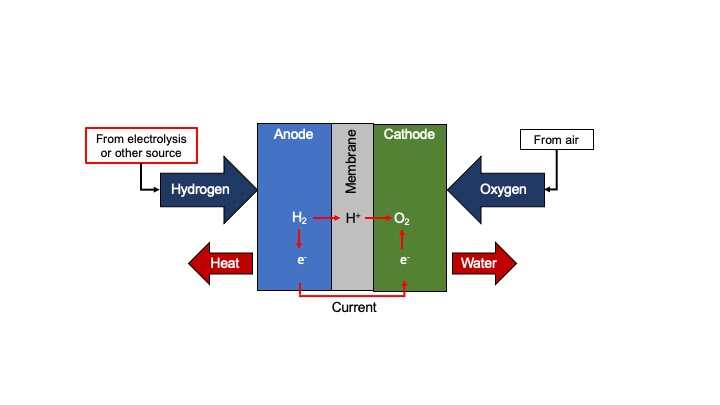7 Air Pollution Effects Explained
Air pollution effects are; respiratory illness, cardiovascular disease, leukaemia, increased acidity, low visibility, productivity decline, labor and healthcare losses.
They could be broadly categorized into effects of aid pollution on human health, environment/ecosystem, and economy.
This article discusses air pollution effects, as outlined below;
-Effects of Air Pollution on Human Health
-Effects of Air Pollution on Environment
-Effects of Air Pollution on Economy
-Effects of Air Pollution on Human Health
Effects of air pollution on human health include; respiratory illness, cardiovascular disease, and lung cancer.
1). Respiratory Illness (as one of the Air Pollution Effects)
Air pollution is both a causal factor and an aggravating agent, of respiratory illnesses in humans.
Exposure to polluted air in indoor or outdoor environments, can have severe consequences for the respiratory system and its organs.
This is because of the toxic and obstructive nature of many air pollutants like particulate matter, ground-level ozone, and volatile organic compounds (VOCs), among others.
The likelihood of air pollution leading to respiratory illness, is generally higher in children, due to the relative weakness of their immune system and the fact that their respiratory organs are still in the developmental stage.
In adults, such respiratory illnesses may also occur, but generally at lower rates, and only with significant exposure.
The amount of exposure (long-term, short-term) that is needed for respiratory illness to occur from interaction with air pollutants, differs widely, and depends on the pollutant(s) involved, as well as the health status, age, and immunity of the individual.
People who live or work in areas with low air quality, as well as the old and the very young, tend to exhibit higher susceptibility to respiratory illness [8], than others who come in contact with such low-quality air on an occasional basis.
Examples of respiratory problems resulting or worsening from air pollution are; asthma, bronchitis, lung cancer, and chronic obstructive pulmonary disease (COPD) [7].
Air pollution is accountable for many fatalities from these diseases worldwide.

2). Cardiovascular Disease
Air pollution affects the cardiovascular system by altering its biochemical and physicochemical makeup in ways and to extents that can be hazardous.
Generally, air pollution causes cardiovascular disease by bringing the cardiovascular system and its organs in close contact with toxic airborne pollutants through inhalation.
When polluted air is inhaled, the pollutants in such air can travel through the lungs into the bloodstream, thereby being circulated in the blood, by the hearth.
This scenario can facilitate changes in the function of the hearth and the nature of circulatory vessels like arteries.
Atherosclerosis is an example of the outcome of such changes, whereby air pollutants in the blood cause damage to the arteries [5].
The effects of circulating toxins from air in the bloodstream, can cause the heart to either decline in its efficiency, or to cease to operate entirely; resulting in cardiac arrest and death.
Fine particulate matter (PM2.5) is arguably the most potent and common air pollutant that is associated with cardiovascular illness and heart attack in humans [3].
3). Leukaemia (as one of the Air Pollution Effects)
Leukaemia or cancer of the blood is linked to air pollution.
Studies have shown that leukaemia is caused by air pollution, especially in children [4].
The risk of incidence of leukaemia is generally higher on prolonged exposure to air pollutants from transport vehicles and other similar emissions.
Other sources of air pollution are also linked to leukaemia, although most of these are outdoor-based.
Nitrous oxides, and organic airborne pollutants like benzene, are prominent examples of pollutants that cause or increase the risk of leukaemia [2].
-Effects of Air Pollution on Environment
Effects of air pollution on environment include; increased acidity, low visibility, and productivity decline.
4). Increased Acidity
Air pollution can cause acidification of decrease in pH of environmental media such as water and soil [1].
This is because many air pollutants are anhydrous and acidic, therefore, they have a pH-reducing effect in the environment.
Examples of acidic air pollutants include nitrogen oxides, and sulfuric oxides.
The greenhouse gas carbon dioxide (CO2), which is often released into the atmosphere alongside pollutants, is anhydrous and acidic in water.
Acidification as a result of air pollution, may occur in the form of acid rain or ocean acidification/marine pollution.
Effects of environmental acidification include loss of soil fertility, deforestation, and biodiversity loss.
5). Low Visibility (as one of the Air Pollution Effects)
Air pollution reduces visibility due to the presence of pollutants like particulate matter, that are capable of obstructing light passage through the air [9].
The effect of such air pollutants on visibility can be referred to as ‘aesthetic pollution’, ‘haze’, ‘aerosol clouding’, among others.
It can be both aesthetically unpleasant as well as pose the risk of accidents.
Air pollution-induced haze also indicates a high concentration of pollutants in air, which increases the risk of health problems.

6). Productivity Decline
A decline in productivity is one of the effects of air pollution on the ecosystem.
The hydrosphere, geosphere, atmosphere and biosphere are all impacted by air pollution.
Air pollution affects the geosphere and hydrosphere by acidifying soil and water respectively.
This effect translates to the biosphere and reduces the survival rate and reproduction of organisms.
Productivity decline from air pollution can occur even in artificial ecosystems such as agricultural systems; where there are biotic components.
Examples of pollutants that can decrease productivity are ozone, nitrogen oxide and sulfur dioxide.
-Effects of Air Pollution on Economy
The effects of air pollution on economy are losses in labor effectiveness and healthcare expenses.
7). Labor and Healthcare Losses (as one of the Air Pollution Effects)
Air pollution affects labor productivity in a negative manner, by reducing the health and vitality of workers as well as by causing absence from work [6].
These effects on a large-scale can be significant, resulting in major gross domestic product (GDP) losses.
Economic losses also come from healthcare expenditure, which tends to increase exponentially under polluted-air conditions. Such expenditure is viewed as a loss because it diverts resources that could be used for other purposes.
Conclusion
Air pollution effects are;
1. Respiratory Illness
2. Cardiovascular Disease
3. Leukaemia
4. Increased Acidity
5. Low Visibility
6. Productivity Decline
7. Labor and Healthcare Losses
References
1). Abrahamsen, G. (1987). Air Pollution and Soil Acidification. In: Hutchinson, T.C., Meema, K.M. (eds). “Effects of Atmospheric Pollutants on Forests, Wetlands and Agricultural Ecosystems.” NATO ASI Series, vol 16. Springer, Berlin, Heidelberg. Available at: https://doi.org/10.1007/978-3-642-70874-9_23. (Accessed 1 December 2022).
2). Alexander, D. D.; Wagner, M. E. (2010). “Benzene Exposure and Non-Hodgkin Lymphoma: A Meta-Analysis of Epidemiologic Studies.” Journal of occupational and environmental medicine / American College of Occupational and Environmental Medicine 52(2):169-89. Available at: https://doi.org/10.1097/JOM.0b013e3181cc9cf0. (Accessed 1 December 2022).
3). Basith, S.; Manavalan, B.; Shin, T. H.; Park, C. B.; Lee, W. S.; Kim, J.; Lee, G.(2022). “The Impact of Fine Particulate Matter 2.5 on the Cardiovascular System: A Review of the Invisible Killer.” Nanomaterials (Basel). 2022 Aug 2;12(15):2656. Available at: https://doi.org/10.3390/nano12152656. (Accessed 1 December 2022).
4). Filippini, T.; Hatch, E. E.; Rothman, K. J.; Heck, J. E.; Park, A. S.; Crippa, A.; Orsini, N.; Vinceti, M. (2019). “Association between Outdoor Air Pollution and Childhood Leukemia: A Systematic Review and Dose–Response Meta-Analysis.” Environmental Health Perspectives 127(4):046002. Available at: https://doi.org/10.1289/EHP4381. (Accessed 1 December 2022).
5). Hasslöf, H.; Molnár, P.; Andersson, E.; Spanne, M.; Gustafsson, S.; Stroh, E.; Engström, G.; Stockfelt, L. (2020). “Long-term exposure to air pollution and atherosclerosis in the carotid arteries in the Malmö Diet and Cancer Cohort.” Environmental Research 191:110095. Available at: https://doi.org/10.1016/j.envres.2020.110095. (Accessed 1 December 2022).
6). He, Q.; Ji, X. J. (2021). “The Labor Productivity Consequences of Exposure to Particulate Matters: Evidence from a Chinese National Panel Survey.” International Journal of Environmental Research and Public Health 18(23):12859. Available at: https://doi.org/10.3390/ijerph182312859. (Accessed 1 December 2022).
7). Jiang, X.; Mei, X.; Feng, D. (2016). “Air pollution and chronic airway diseases: What should people know and do?” Journal of Thoracic Disease 8(1):E31-E40. Available at: https://doi.org/10.3978/j.issn.2072-1439.2015.11.50. (Accessed 1 December 2022).
8). Manisalidis, I.; Stavropoulou, E.; Stavropoulos, A.; Bezirtzoglou, E. (2020). “Environmental and Health Impacts of Air Pollution: A Review.” Frontiers in Public Health 8. Available at: https://doi.org/10.3389/fpubh.2020.00014. (Accessed 1 December 2022).
9). Ting, Y.; Lin, T.; Young, L.; Tsay, S.; Chang, K.; Hsiao, T. (2021). “Quantifying the impacts of PM2.5 constituents and relative humidity on visibility impairment in a suburban area of eastern Asia using long-term in-situ measurements.” Science of The Total Environment 818(4):151759. Available at: https://doi.org/10.1016/j.scitotenv.2021.151759. (Accessed 1 December 2022).





